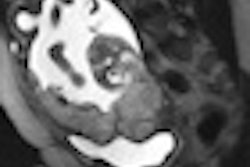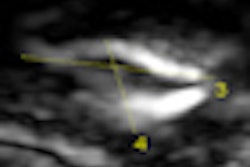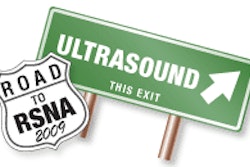A Spanish research team has found that ultrasound elastography can reliably differentiate between rapid or slow fibrosis in liver transplant patients, paving the way for earlier identification of patients at risk of hepatitis C recurrence.
The study group, led by Dr. Miquel Navasa of the Hospital Clinic in Barcelona, Spain, found that liver stiffness measurements performed in the first year following liver transplant were extremely accurate in detecting fibrosis severity, particularly so at the six-month mark. The researchers believe these findings will enable administration of early-stage therapies that could prevent liver transplant or graft failure.
"Simple scores including bilirubin and [liver stiffness measurements], or donor age and [liver stiffness measurements] at six months can accurately predict the risk to develop significant fibrosis or portal hypertension in these patients," the authors wrote in the January issue of Hepatology (2010, Vol. 51:1, pp. 23-24).
In a study period from August 2004 to January 2008, the researchers evaluated 84 liver transplant patients with hepatitis C virus recurrence and a control group of 19 nonhepatitis C virus transplant patients using FibroScan (Echosens, Paris). Lung transplant reasons in the control group included alcoholic cirrhosis (10), primary biliary cirrhosis (2), Caroli disease (2), familial amyloid polyneuropathy (2), autoimmune hepatitis (1), and cryptogenetic cirrhosis (2).
Liver stiffness was measured on the right lobe of the liver and was measured repeatedly during the year after transplant. Of the 84 liver transplant patients with hepatitis C virus recurrence, 53 were deemed to be slow "fibrosers" with median liver stiffness measurements of 6.9 kilopascals (kPa) at three months, 6.9 kPa at six months, 7.5 kPa at nine months, and 6.6 kPa at 12 months.
The other 31 patients were judged to be rapid fibrosers with median measurements of 7.5 kPa at three months, 9.9 kPa at six months, 9.5 kPa at nine months, and 12.1 kPa at 12 months.
Liver stiffness measurements did not significantly increase during the first year after transplant for all control participants. While slow "fibrosers" progressed at the same rate as nonhepatitis C virus liver transplant patients, rapid "fibrosers" showed significant fibrosis and portal hypertension very early in the follow-up period, according to Navasa.
The study team also tried to identify the variables associated with the presence of significant fibrosis one year after liver transplants. Variables associated with rapid fibrosis progression included:
- Cytomegalovirus infection
- Alanine aminotransferase (ALT) level
- Bilirubin level and hepatitis C viral load (at three months)
- Bilirubin level and liver stiffness measurements (at six months)
The authors determined that only liver stiffness measurements and bilirubin levels were independent predictors of fibrosis at six months.
By Erik L. Ridley
AuntMinnie.com staff writer
January 6, 2010
Related Reading
Mayo Clinic develops MR elastography for liver patients, November 18, 2008
CT maintains edge over MRI in liver transplant planning, March 10, 2008
Advanced liver imaging shapes surgical strategies, September 18, 2007
Liver stiffness tied to portal hypertension in cirrhosis, May 16, 2007
Elastography noninvasively assesses hepatic fibrosis in HIV/HVC patients, February 7, 2006
Copyright © 2010 AuntMinnie.com




















